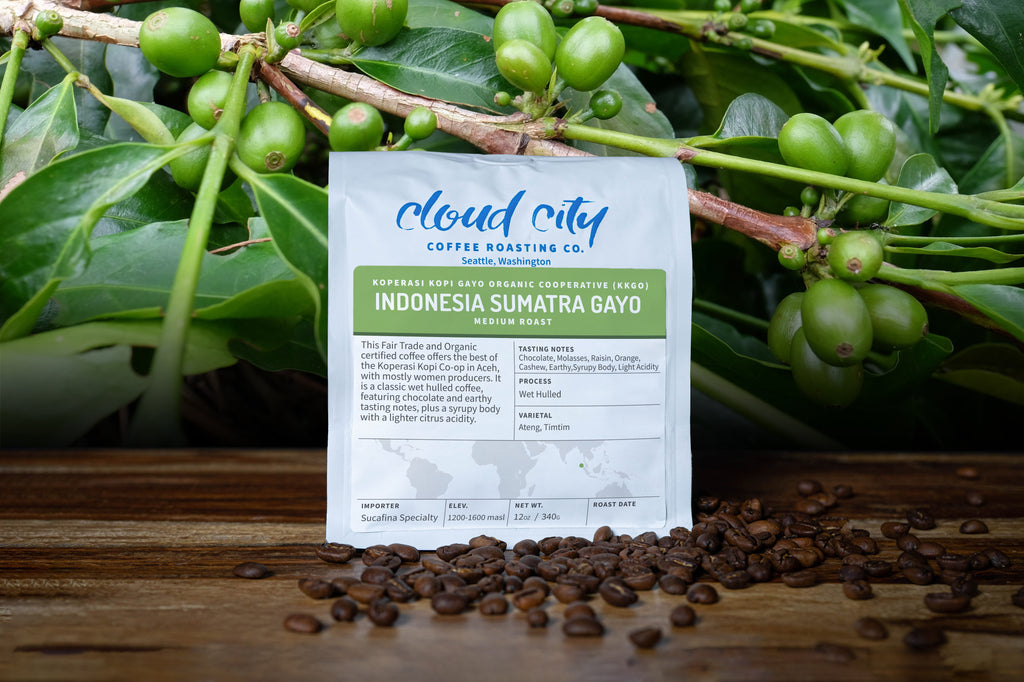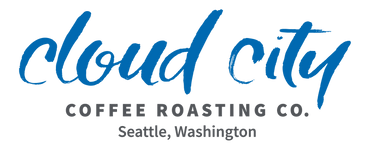Indonesia Sumatra Gayo

Producer/Co-op Koperasi Kopi Gayo Organic Cooperative (KKGO)
Region: Aceh, Sumatra, Indonesia
Variety: Ateng, Timtim
Processing: Wet hulled and dried in the sun
Elevation: 1,200 – 1,600 masl
Wet Mill: PT. Ihtiyeri Keti Ara (IKA) washing station Jagong
Dry Mill: PT Ihtiyeri Keti Ara (IKA) dry mill in Takengon
Harvest: April-June 2021
Soil: Volcanic loam
SUMATRA FTO TAKENGON GAYO KKGO is produced on family owned farms organized around the Koperasi Kopi Gayo Organic cooperative (KKGO), located in the Takengon highlands of the Aceh province on the island of Sumatra, Indonesia. This region of Indonesia is also referred to as the Gayo land because the coffee farmers are from the Gayonese ethnic group. A high percentage of farmers, typically from the most remote villages of the Takengon highlands, are widows who lost their husbands during periods of conflict in Aceh. Natural disasters that seem to hit the region every decade or so add a distressed infrastructure to the otherwise natural beauty of the mineral rich volcanic soils surrounding Lake Tawa. Despite these challenges, KKGO has worked tirelessly for the last decade providing an infrastructure for quality coffee production including education on best organic agricultural practices and environmental stewardship for more than 1,500 producers who cultivate coffee on parcels that average 2.5 acres in size. KKGO collaborates with PT IKA, a family owned export company that operates its own dry-mill in Takengon, which provides logistics to transport and export KKGOs coffee without the long and convoluted supply lines that often compromise the quality of Sumatran coffee.


About Wet Hulling, from our partner Sucafina Specialty:
Giling Basah: Wet Hulled Process
Indonesia is perhaps best known for its unique wet hulling process (giling basah). Though its exact origins are unclear, wet hulling most likely originated in Aceh during the late 1970s.
Wet hulling’s popularity can be attributed to producers’ need for prompt payments. It was also adopted specifically by many producers who lacked the drying infrastructure that was needed to shelter drying parchment from the high humidity and inconsistent rainfall typical in Sumatra. At higher elevations with constant humidity and unpredictable rainfall, drying can prove to be slow, risky and difficult.
The basic process for wet hulling is as follows: Cherry is harvested and pulped at or near the farm, on small hand-cranked or motorized pulpers. The coffee is fermented overnight (in small tanks, buckets, or bags) and washed with clean water the following morning. Parchment is sun-dried for between half a day and two days, depending on the weather, to allow for skin drying which eases the removal of parchment.

At this juncture the moisture content is between 30-40% and parchment is delivered to a processor (often by the village collector) for wet hulling. A wet hulling machine is larger, requires more power, and runs at a faster speed than a traditional dry huller. After the hulling, the coffee seed is whitish and pliable and is called labu. It is laid out to dry on tarps or patios, where it reduces in size and moisture to 14-15%. This stage the green coffee is known as asalan - unsorted and with defects. Much of the internal commercial trade is for asalan. Exporters, most of whom are based in Medan, will finish the drying down to 12-13%, sort and prepare for shipment.

Our premium and specialty wet hulled coffees are produced in direct collaboration with village collectors and processors so that the drying, storage, and lot integrity remain in place from the farmer all the way you. In this way we can export cleaner, more stable and more traceable regional lots.

Leave a comment